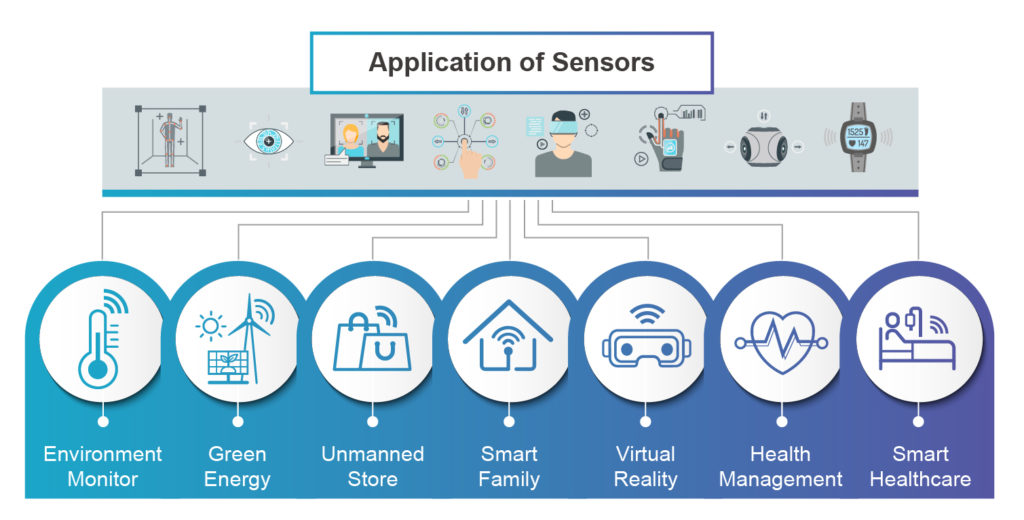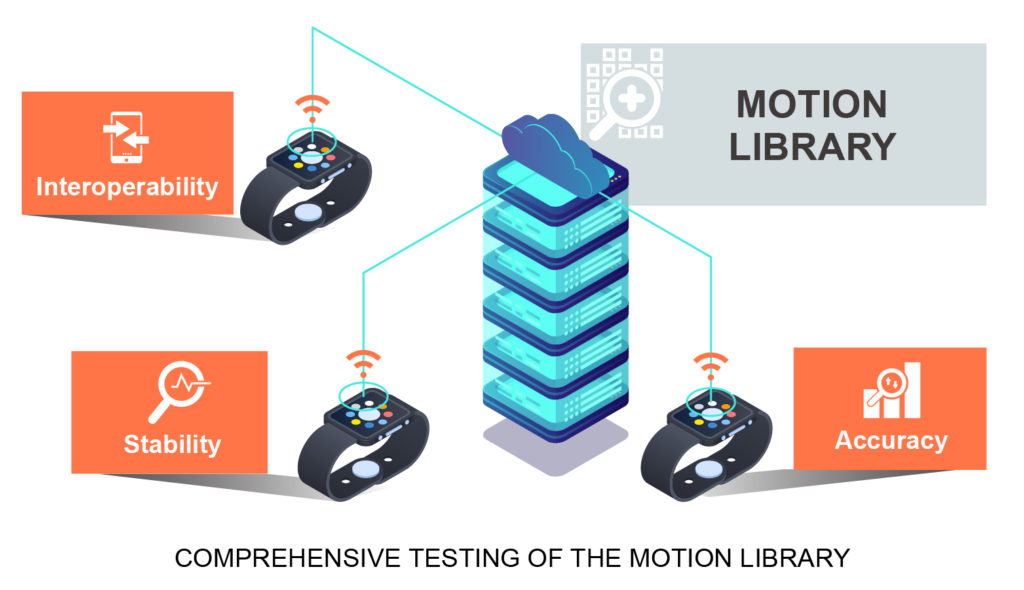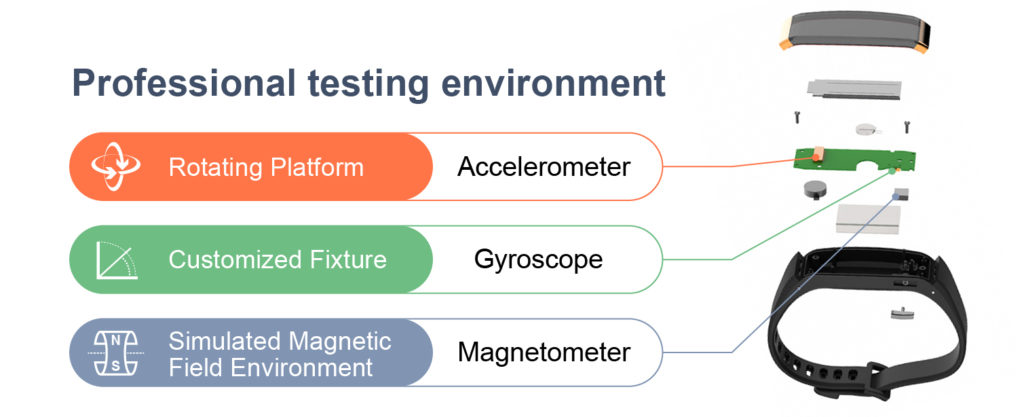Smart wearable devices have improved the quality of life and convenience for mankind, which is why they are gaining popularity around the world. Many types of wearable devices can now be found on the market, including watches, wristbands, glasses, and wearables, while these devices have already been applied to health management, digital medicine, and virtual reality (VR), primarily oriented to entertainment and various other applications.
Regarding health management, users only need to put on a smartwatch to track their heart rate, sleep quality, exercise records, and others to enjoy comprehensive personal health management. Last year, Apple introduced the Apple Watch with fall and ECG detection. In fact, some users have found that they have atrial fibrillation by wearing an Apple Watch.
Furthermore, smart wearable devices also help to establish a complete digital medical system. The physiological information obtained by the device can simply be uploaded onto the medical cloud management system through the network. Then, hospitals can use big data analysis to assist users of different ages. In various life situations, these wearable devices can help monitor your physical conditions and achieve the ideal state of prevention over treatment.
However, what readers may not know is that all of these applications rely heavily on the accuracy and stability of the sensors in these devices to not only furnish the interaction between man and machine but also create the perfect collaboration between them. At any time, if the sensor is not stable enough to provide correct measurement data, it is very likely that the user will overestimate their physical state and may try strenuous exercise, thus threatening their very own lives. Furthermore, if the big data accumulated with a large amount of information provided by the sensor is distorted, it will have a negative effect, rendering the patients to misjudge their own conditions, which can subsequently lead to such issues as delays in treatment.
Therefore, the software and hardware design of the sensor in a wearable device, including the wake-up function, pedometer function, auxiliary function of positioning, and others, will directly affect the performance of such device and thus indirectly affect user experience. We can even generally say that in the era of the booming smart device ecosystem and interactive experiences, a large part of the interaction, collaboration, and user experience between man and machine relies on the sensors in such devices.
As an expert of intelligent AI testing, Allion particularly focuses on those smart wearable devices that are closely related to daily life, among many others, and we decided to write this article to share how we can help manufacturers ensure their smart wearable devices are effective and how we test the effectiveness of their sensors, thus accommodating consumers’ various needs.

Why would you need Motion Library?
In general, a new product has to undergo such phases as Engineering Verification Testing (EVT), Design Verification Testing (DVT), and Production Verification Testing (PVT) before reaching the market. Every phase has corresponding verification targets that must be met. For example, in the EVT phase, we focus on organization and hardware testing to identify major problems and then correct them. In the DVT phase, functional verification and standard certification tests such as HDMI, USB, Bluetooth®, Wi-Fi, and others are carried out in order to confirm the basic functions of the product and whether they meet the standard specifications of the association. The PVT phase consists of the test for overall performance, while we believe that smart wearable devices are no exception and should undergo those necessary and basic tests.
However, wearable devices require smarter testing because wearable devices and technically mature IT products (including computers, laptops, etc.) are used in considerably different contexts. Wearable devices need to be worn on the body for a long time, with an emphasis on man-machine interaction, while human behaviors are difficult to predict. Imagine a scenario in which we often have to speed up all of a sudden to catch a bus. When we walk, the pace can be either slow or fast; while sleeping, we stop all of our motion. Everyone has their own habits. Therefore, is it possible that manufacturers can really ensure that smart wearable devices perform normally in different usage scenarios? In addition to different usage scenarios, we have often learned from consumers who complain about compatibility and interoperability issues for certain smart bracelets that can be connected to A-brand mobile phone, but not to B-brand mobile phone. How can all of these problems be resolved?
Motion Library-Integrating AI and interop test capability
Allion’s AI Robotic Testing Lab has collected a variety of usage patterns and context data from users. Through man-machine AI interaction, we can reproduce a large number of usage behaviors of analog devices in a short period of time and discover fundamental problems through repetitive tests. Ultimately, we can assist manufacturers in establishing a big data database for subsequent in-depth analysis. For interoperability issues, Allion’s Interoperability Test Center has a wealth of smart devices so that we can select matching models to implement compatibility test programs according to customer needs and strive to comprehensively furnish customers’ target markets.
Next, we will use the most commonly seen smart wearable device, the “smart bracelet,” to demonstrate to readers how Allion combines the capability of the InteroperabilityTest Center and AI Robotic Testing to work in conjunction with big data, sensors, and smart device features. As a result, it has created the brand-new “Sensor Data Library – Motion Library” to comprehensively carry out testing from the three aspects of interoperability, stability, and accuracy.

Allion's Global IoT Center gives a diverse database to solve your interop issues
According to analysis by the Big Data Database of Allion, mere connections have already amounted to 70% of the problems from the perspective of the past interoperability problems of Bluetooth® devices (including smart bracelets); of those, matching problems accounted for 45%, while disconnection and reconnection accounted for 55%.

Since a variety of smart devices are now found on the market, manufacturers can independently purchase many kinds of equipment, but at a higher cost. Meanwhile, Allion possesses a rich and diversified device database that contains mobile phones, tablets, TVs, smart speakers, and notebook computers so that it can help customers choose products that meet their own requirements to conduct compatible testing.
- Test to Pass test: Select the popular model of a device with a high market share to achieve a high level of confidence in compatibility
- Test to Fail test: In view of the focused problems, conduct comprehensive pairing and verification tests with models with high compatibility difficulty to discover problems
Through our Motion Library team, we found out that whether one chooses the Test to Pass or the Test to Fail test plan, the smart bracelet encounters highly similar problems when performing both. In view of these commonly seen problems, Allion can provide debugging analysis services to identify problems and provide feedback to manufacturers.
1. The Motion Library team will first carry out Bluetooth® pairing with the smart bracelets being tested with several mobile phones and tablets. The results indicated that many bracelets that are well reputed on the market were found with such abnormal contexts as failed pairing or failure to disconnect from pairing.
2. After successful pairing, certain abnormal signs of operation remain.

AI-driven, scenario-based tests ensure better quality for wearable devices
After solving the device’s pairing problem that users first encounter, we will then introduce one of the inevitable applications of the sensor of a wearable device – the pedometer. Pedometers can help users track and record the number of steps taken in real time. When the accuracy and stability of step counting does not function properly, it will lead to poor user experience, and you may have already heard some user complaints:
- My walking route is the same every day, so how can there be so much difference in the steps counted with the pedometer? Have I ever actually achieved my exercise goals?
Therefore, “the stability and accuracy of the pedometer” has become an indicator when users consider whether to purchase or not. In response to the performance of the sensor as well as to the design of basic functional tests, Allion has developed customized situational tests to ensure that the wearable device will have certain performance ability in different usage situations.
Hardware function tests
The sensor has three major components: accelerometer, gyroscope, and magnetometer, which are vital for triggering and directing the functions of the smart device. In view of these three components, Allion makes use of such professional testing environments as rotating platforms, customized fixtures, and simulated magnetic field environments to help customers perform hardware tests and ensure the hardware specifications of the sensor.

Customized situation tests of AI
Because wearable devices have to be put on the body for a long period of time, considerable attention should be paid to man-machine interaction. Since human behaviors are constantly changing, in addition to various different usage situations, the combination of variables can be very diverse.
As we move toward the era of AIoT, the Motion Library of Allion has adopted test measures that are wholly different from those in the IT era. Through man-machine interaction, we have reproduced and simulated a large number of behavior patterns with human uses in different situations within a very short time span in order to accumulate huge amounts of experiential data. Situation tests by AI can prevent companies from the dilemma of being unable to find test subjects, help set down corresponding parameters according to the age and gender of users, and assist customers in exploring fundamental problems through repetitive tests to ensure that the wearable device has certain performance capability in each of the situations with different uses.
Now, we will follow up with the pedometer function of the smart bracelet to demonstrate how the Motion Library can be customized for an AI test designed for the step-counting function of a smart bracelet!
Step 1
Building the scenario – Set up a database for Arm Swing Pattern
The Motion Library team will first create an Arm Swing Pattern database to collect various possible usage patterns and performances, such as running, walking slowly, step frequency of walking (step/s), and arm swing angle of the average adult. Then, such data is imported into robot arms that simulate the swing arm motion of users to design different arm swing patterns.
Step 2
Select Arm Swing Pattern and Arm Swing Frequency
The frequency of this experiment is established at the baseline of 120 steps (based on the criterion of slow walking by 40-year-old male adults). After selecting the Arm Swing Pattern, a large number of repetitions can be qualitatively and quantitatively used to measure the stability and accuracy of a pedometer.

Step 3
Collect data, identify problems, provide suggestions for improvement
After the actual test, even the popular brands on the market were found to perform poorly in terms of stability and accuracy.
The so-called stability primarily measures the number of steps to see if each performance occasion is consistent under the same environment and conditions. The experimental results show that some pedometers have a large drop in performance each time in the case where the swing frequency of the robot arms is 120. For users who love sports and want to conduct strict health management, this issue causes a lot of trouble.
Meanwhile, accuracy compares the actual number of steps set and a number of display steps on the device. If the two differ, it means the pedometer has low accuracy, so that consumers may not obtain the correct information when using and may underestimate their athletic performance.
Big Data Analysis - Make Tests Smarter
With the persisting accumulation of various test scenarios and behavioral data, manufacturers can have their own proprietary big data database, and such massive historical data will facilitate subsequent in-depth analysis, such as the occurrence frequency of hardware and software problems. Then, that data can help determine whether these problems are sporadic or normal, which can serve as an important reference for enhancing product design. According to manufacturers’ requirements, the big data can provide such graphic indications as line charts, bar graphs, and pie charts to help manufacturers learn about their product positioning, competitiveness, and differences from their competitors, all of which are considered useful marketing tools as it helps bring a better user experience to consumers.
All smart devices can be tested - For sensor testing, simply turn it over to the Motion Library of Allion
These days, smart devices equipped with sensors are becoming increasingly popular within the entire smart device ecosystem for health management, life entertainment, and smart care. However, testing and verification methods need to break away from the traditional testing measures found in the IT era, with automated AI testing introduced to create situational tests that are closer to real actual user-behaviors. This article has illustrated this with the smart bracelet example and the exclusive development of the automated AI pedometer test through the robot arm, along with interoperability solutions through our global IoT Center.
In this AIoT era, manufacturers have subsequently launched a variety of smart devices on the market. Furthermore, Motion Library can further work with visual identification, as well as AI automated testing of voice recognition, the huge software and hardware database, and big data. Therefore, it has helped design diversified scenarios to meet the needs of users and create a brand-new mode of testing.
Next, the Motion Library of Allion will also conduct various types of actual tests for sensing devices; please follow up with the Tech Blog of Allion.
Technical Highlights



































